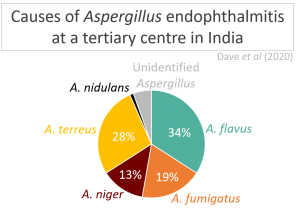Submitted by Aspergillus Administrator on 13 October 2010
A recent news story mentions that garlic has many beneficial properties including antifungal, antibacterial, antiparasitic all without damaging our normal microbial flora, stimulates the immune system, clears out the blood vessels, lowers blood cholesterol, cures cancer and more – quite an impressive list. How much of this is true?
Much of it is based on laboratory experiments in test tubes with little or no evidence on its properties when used in humans (wikipedia). In those cases where it has been tested in humans the results are variable e.g. it has been found to be completely non-active in reducing blood cholesterol levels, but has been found to be a useful antiseptic and to alleviate some complications of diabetes – the latter to such an extent that it needs careful monitoring if used alongside some conventional drugs used to treat diabetes.
Is it useful to treat fungal infections, in particular infections by Aspergillus? This research paper from 2007 clearly demonstrates that garlic does have good antifungal activity in the laboratory but again no work is done on humans. Perhaps applying garlic directly to a superficial fungal infection might help but if eaten it seems highly unlikely that the levels used in the laboratory would be reached unless huge amounts of garlic were consumed. There is more bad news – the garlis must be eaten fresh and raw! Not a palatable option for most of us or our nearest & dearest.
This is a case of wait and see. We can look at the substances in garlic that are antifungal and they might provide a clue to a new way to attack fungi. This could lead to the development of new antifungal drugs that could be produced in concentrated (and odour-free) pill form.
Will eating a clove or two a day help prevent fungal infections? Probably not – even if eaten raw there is too little active ingredient when absorbed into our bodies. A clove might weight a few grams and that would be effectively diluted into our bodies that weigh many tens of kilos – a dilution rate of many thousands.
But never mind – it still tastes good!
News archives
-
Title
Date



